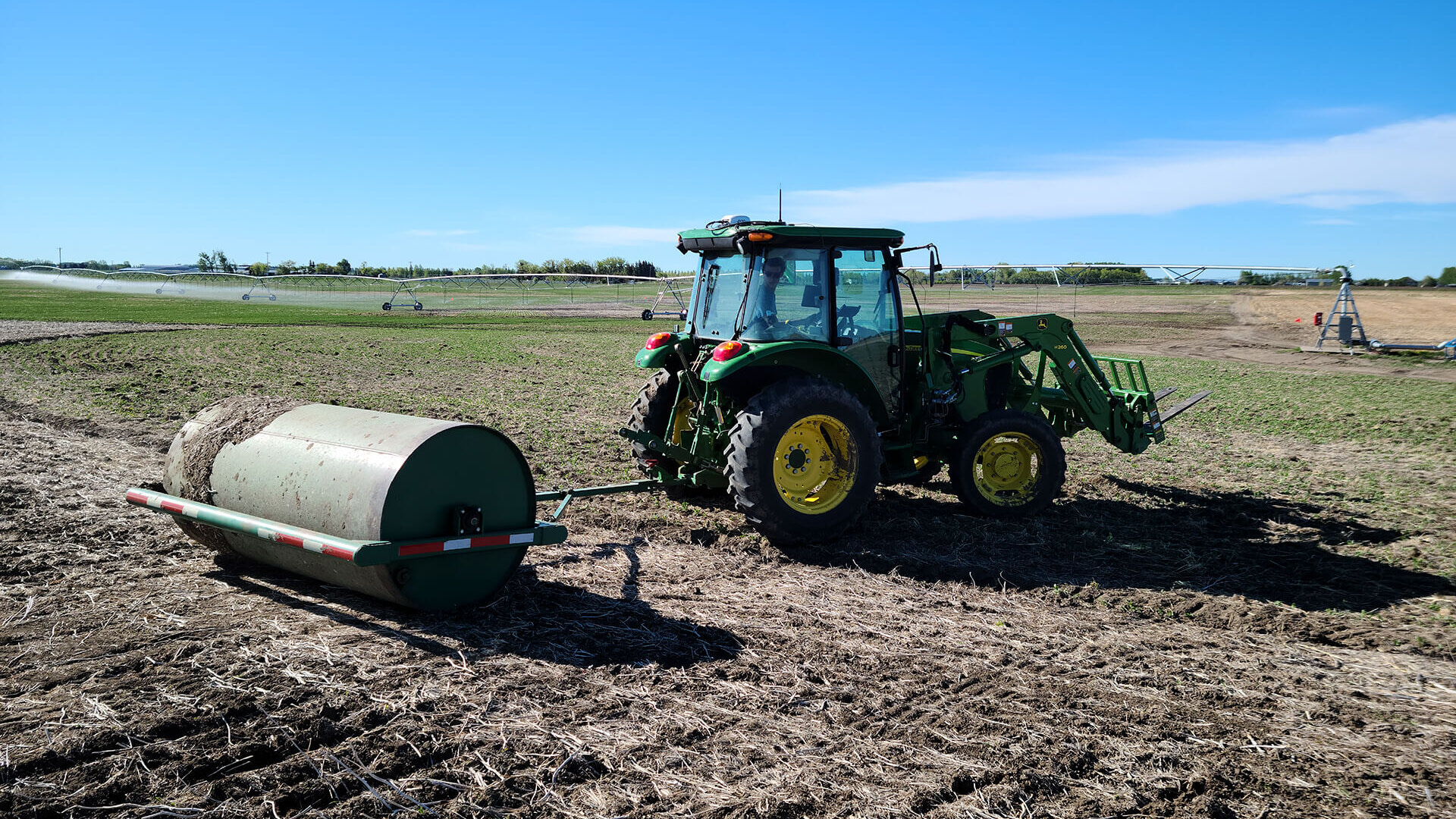BackgroundLand rollers are commonly used to push rocks into the soils and improve harvest operation during silage crop production. Other benefits of land rolling include cleaner seed at harvest, and reduced damage to the harvesting equipment. However, there is increased risk of plant injury, disease incidence, soil compaction, and soil erosion if the operation is not conducted at the correct crop growth stage and under proper soil conditions. There is a lack of scientific information on the proper management practices associated with land rolling of silage crops such as wheat and barley. This study will be conducted at three locations across southern Alberta for three growing seasons (2022-24) to determine the effect of timing of land rolling for zero-till and conventional till systems in irrigated wheat and barley crop production. Land rolling will be conducted at five crop growth stages including after seeding, coleoptile-emergence, 2-3 leaf stage, 3-5 tiller stage, and beginning of stem elongation stage (second node detectable) to determine proper timing for land rolling of wheat and barley fields. The effect of land rolling on crop growth and soil properties will be compared for zero-till and conventional-till systems. Crop growth characteristics including plant emergence, plant injury, crop biomass and feed value, and grain yield and quality will be measured. The assessment of soil properties will include measurement of soil moisture and penetration resistance. This project will provide a comprehensive assessment of the effect of land rolling on crop production and soil quality. |
|
||||||||||
Project ObjectivesLong-term objective - The information from this project will help in the reducing crop injury from the land rolling operations, thus maximizing crop productivity and profitability of the farmers. Additionally, this project will help in reducing soil erosion and enhancing soil health over the long-term by reducing the adverse effects of land rolling on the soil structure.
|
|||
Methods |
||||||||||||||
|
Land rolling is a common management practice for forage crop production. This project will focus on the southern Alberta region since majority of irrigated forage production is carried out in this region. Small plot (~2.5m x 16m) research trials will be conducted under irrigated conditions at three sites in southern Alberta for three growing seasons (2022 to 2024). The sites will be chosen to represent different types of soil textures (tentatively, at Lethbridge, Taber, and Bow Island) since the effect of rolling on soil moisture, compaction and plant growth may vary with soil properties such as texture and moisture (Tong et al. 2015). The trials will be conducted separately for both crops using randomized complete block design (RCBD). Crops will be seeded using the cultivars Sadash (SWS) for wheat and CDC Austenson for Barley since these cultivars have the highest acreage for silage production of their respective crops in Alberta. Crops will be seeded at the target rate of 350 seeds/m2. Land rolling will be performed parallel to the seed rows without turning on the plots. Rolling speed of approx. 13 km/hr will be targeted. The total ground pressure from the roller will be targeted at approx. 744 kg/m (500 lb/ft), which amounts to approx. 60% of the roller filled with water (i.e., 60% ballast). These practices mimic the commonly followed practices on rolled fields in this region. The rolling operation will be conducted in the morning time (9 am ≥ 12 pm) to ensure uniformity in the plant and soil conditions owing to diurnal weather patterns between different sites. The study will consist of two main treatments including a) timing of rolling and b) tillage system. Timing of rolling will include five different crop stages - a) Immediately after seeding (0-1 days after seeding) b) coleoptile emergence (Z07), c) 2-3 leaf stage (Z12-13), d) 3-5 tiller stage (Z23-25), and e) second node detectable stage (Z32) for both crops. The effects of rolling will be tested for two tillage systems ≥ zero tillage and conventional tillage. Thus, a total of twelve treatments will be included for each crop separately (a total of 24 treatment for both crops taken together). This study will generate data for nine different growing conditions (three locations x three years). Data will be analyzed using linear mixed model analysis in the R statistical software to test the significance of timing of rolling, tillage system, and their interaction effect. Interactions of treatment to different growing conditions (i.e., site years) will be assessed by inspecting their interactions with site-years. If these interactions are significant, the statistical analyses will be performed separately for different site-years. When ANOVA indicates significant treatment effects, Tukey's mean separation will be performed to detect significant differences between treatments. |
|
|||||||||||||
Measurements
|
|||||||||||||

